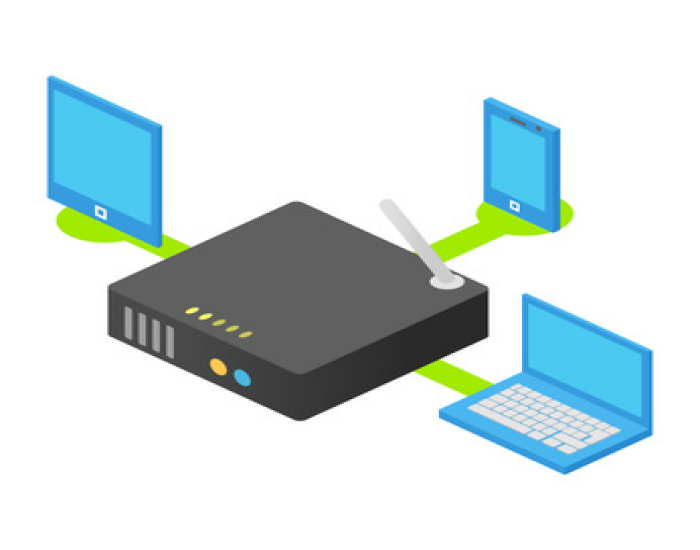 “MU-MIMO.” That’s so much more fun to say than “Multi-User, Multiple-Input, Multiple-Output.” MU-MIMO is wireless technology that allows a single wireless router to send internet data streams to multiple devices simultaneously. That last word — “simultaneously” — is important. Most current wireless routers only communicate with one device at a time, though they switch from device to device so quickly the interruptions are not noticeable. At least not noticeable until you start sending streaming media to multiple devices. That’s when it could be nice to have MU-MIMO — maybe.
“MU-MIMO.” That’s so much more fun to say than “Multi-User, Multiple-Input, Multiple-Output.” MU-MIMO is wireless technology that allows a single wireless router to send internet data streams to multiple devices simultaneously. That last word — “simultaneously” — is important. Most current wireless routers only communicate with one device at a time, though they switch from device to device so quickly the interruptions are not noticeable. At least not noticeable until you start sending streaming media to multiple devices. That’s when it could be nice to have MU-MIMO — maybe.
- What is MU-MIMO? (Digital Trends | Tyler Lacoma) “Much like how film tape looks like a constantly moving image instead of a bunch of stills, accessing Wi-Fi feels like a constant connection to the Internet because the router switches between devices so quickly. However, it can only pay attention to one device at one time, which is one reason why Internet quality goes down if Wi-Fi bandwidth is too low. This works. It works so well that we rarely think about it. But the people who do think about it have long believed that it could work better. What if you could have a router that transmits data to multiple devices simultaneously?”
- How does MU-MIMO work? (Network Computing | Jason Hintersteiner) “MU-MIMO takes this [transmit beamforming] process one step further. By adding even more radio chains/antennas, it can control the phased antenna pattern to control both the areas of maximum constructive interference — where the signal is the strongest — and maximum destructive interference — where the signal is the weakest. With a sufficient number of antennas and knowledge about the relative positions of all associated client devices, it can actually create a phased pattern to talk to multiple clients both independently and simultaneously.”
- How will MU-MIMO improve 802.11ac Wi-Fi? (RCR Wireless News | Kelly Hill) “One of the drawbacks that MU-MIMO faces, however, is device support. Although there has been notable progress on MU-MIMO chipset support and in router deployments over the past 12-18 months, SRG [Signals Research Group] noted that ‘we’ve noticed that a rather large percentage of smartphones do not have a 2×2 Wi-Fi antenna configuration’ — that while MIMO’s use in HSPA+ and LTE cellular phones is nearly ubiquitous, the same is not true for Wi-Fi.”
- What is MU-MIMO, and do I need it on my router? (How-To Geek | Chris Stobing) “Last, there’s the fact that MU-MIMO broadcast signals work on a directional basis, and can only be split up when devices are in different locations around the house. For example: if you’re streaming a movie to the living room on the TV and your kids are connecting their Nintendo 3DS on the couch only a few feet away, by default both devices will be forced to share the same stream.”
Articles from Ohio Web Library:
- MU-MIMO system concepts and implementation aspects. (Intel Technology Journal, 2014, p.92-105 | Biljana Badic, Rajarajan Balraj, Ingmar Groh and Peter Fazekas)
- Secrecy outage analysis of MU-MIMO transmit antenna selection systems with arbitrary number of eavesdropping users. (Electronics Letters, 5/28/2015, p.874-876 | Yujia Hu and Xiaofeng Tao)
- Solving hidden terminal problem in MU-MIMO WLANs with fairness and throughput-aware precoding and a degrees-of-freedom-based MAC design. (EURASIP Journal on Wireless Communications & Networking, 4/22/2016, p.1-25 | Sanjeeb Shrestha, Gengfa Fang, Eryk Dutkiewicz and Xiaojing Huang)


